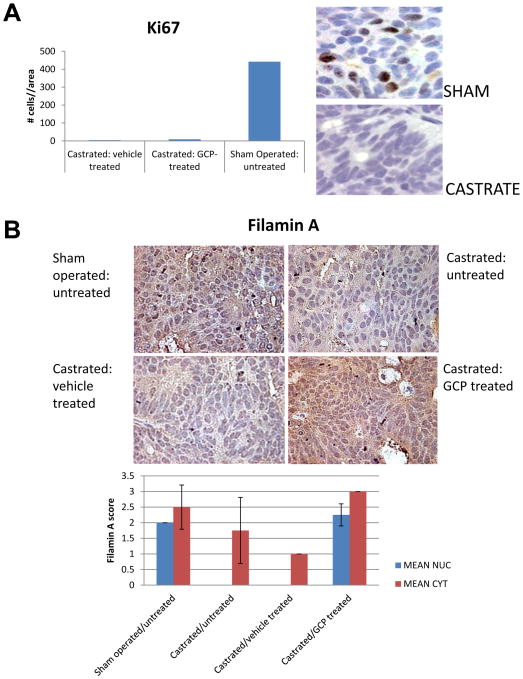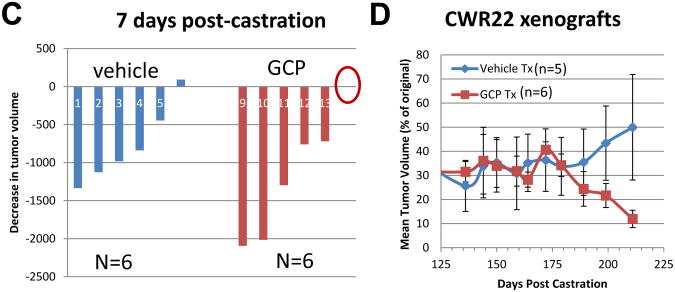Figure 8. GCP treatment prevented relapse in the CWR22 xenograft mouse model.
(A) The tumors were paraffin-embedded, sectioned and stained with anti-Ki67 antibody to determine the effect of GCP and castration on proliferation. Note that tumors in sham-operated animals were positive for Ki67 staining whereas those that were castrated, either in the presence or absence of GCP lacked this staining. Tumors were collected 3 days after the operation. (B) FlnA and AR staining (brown) in tumors from animals who were (i) sham operated, untreated (ii) castrated, untreated (iii) castrated, vehicle treated and (iv) castrated, GCP-treated. Note high FlnA staining in the latter group. (C) Both vehicle and GCP-treated tumors rapidly underwent tumor regression within 7 days following castration. Waterfall plot showing tumor regression in the animals 7-days post castration. Note that GCP-treated tumors underwent greater levels of regression compared to those in vehicle-fed mice. Red circle denotes one tumor that did not undergo significant change in volume. (D) After the initial regression (up to ∼35 days) tumor volume remained essentially steady until 179 days post-castration after which GCP-treated tumors continued to regress while vehicle-treated tumors began to recover, and were distinctly larger than the tumors in GCP-treated mice after 211 days.


